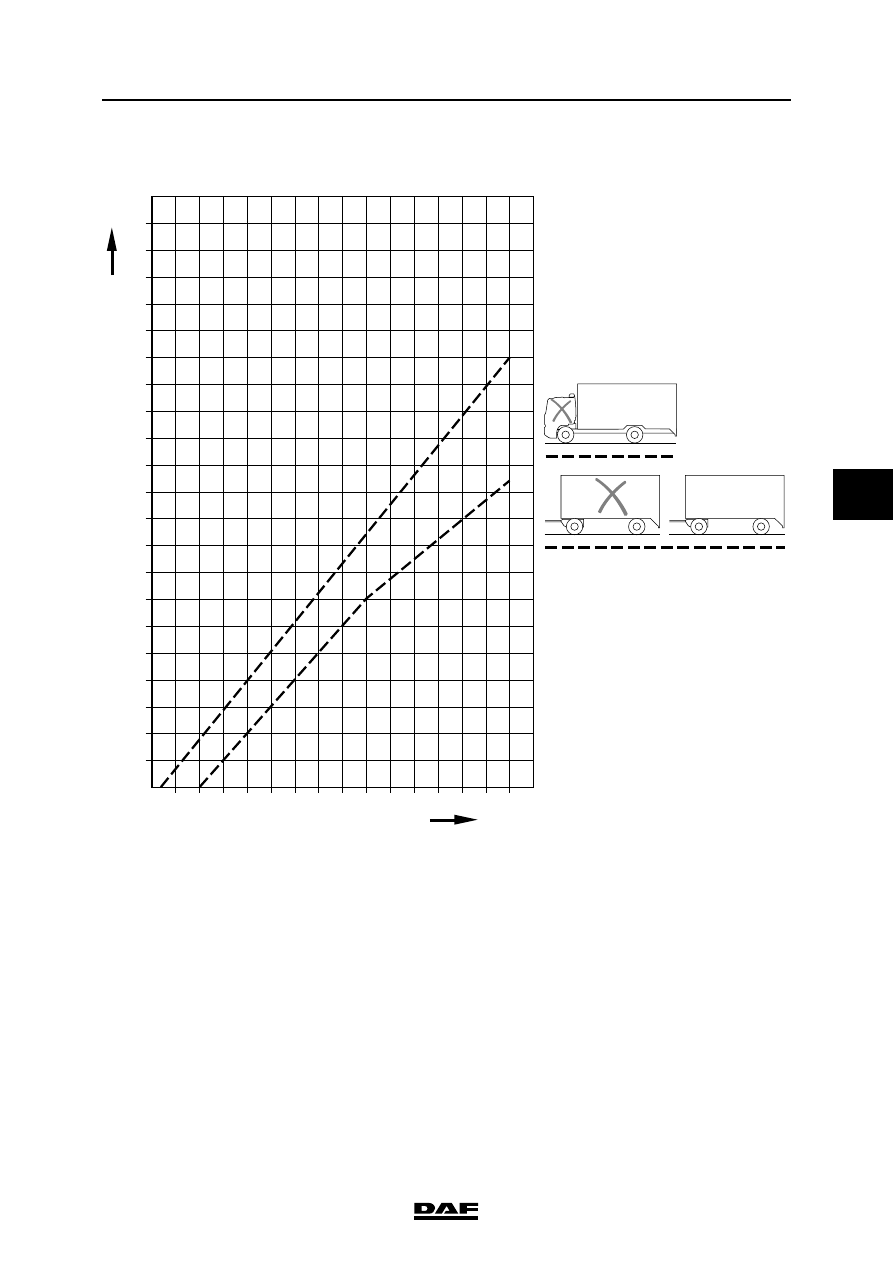DAF LF45, LF55 Series. Manual - part 478

©
200436
1-9
General
BRAKING PERFORMANCE AND BRAKE EQUALISATION
ΛΦ45/55 series
6
5
1.6 EC BAND FOR A LADEN TRUCK/TRAILER COMBINATION
The "EC band" indicates the limits within which
the deceleration value must lie.
The "EC band" applies to:
-
truck with conventional brake system.
-
trailer with conventional or EBS brake
system.
Note:
The following applies to mid-axle trailers fitted
with air brakes:
The permissible ratio between the deceleration
and the pressure at the yellow coupling head of a
laden mid-axle trailer with air brakes should be
within the two areas derived from the EC band for
a laden truck/trailer combination, for which the
vertical scale has been multiplied by 0.95.
100
%
90
80
70
60
50
40
30
20
10
0
1
0
2
3
4
5
6
7
8
R600880
P (bar)
EBS
EBS
a
EBS